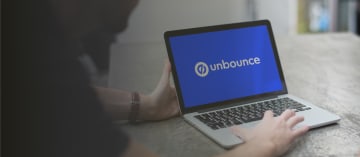Guides & best practices
View all articlesHow to get more traffic to your flows

“Build it, and they will come”, that's how it works, right?
While this might be true for some successful viral content out there, unfortunately it tends to be the exception, not the rule. If you want your forms, landing pages or heyflows to be visited by as many users as possible, you need to put some effort into it and drive traffic to them actively.
Building an engaging flow is only the first step. To gather the data you need—be it leads, sign-ups, or applications for an open position—you must draw visitors to your heyflow.
This article delves into the most effective ways of maximizing visibility and attracting attention to your flows.
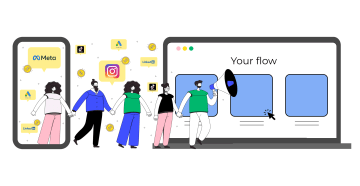
Newsletter/Email
Leverage the potential of your current audience, e.g. through channels like an email list that receives your regular newsletter. Email is a great channel to reach your existing audience and customers. Find a punchy subject line that sparks intrigue and encourages users to open the mail. Incorporate a visually appealing image if possible, and include a link to your flow, accompanied by an informative description. Make sure to communicate clearly what the linked flow is about and why users should take the time to visit and complete it.
And remember: Don’t overwhelm your email with too much content or too many calls-to-action; otherwise, your flow link may get lost amid the sea of information and users are less likely to click the link.
Paid Channels
Chances are you want to attract new audiences instead of existing ones to visit and complete your heyflow. Paid channels are probably the most effective way for reaching substantial user volumes, with the potential to reach millions of people, depending on how much ad budget you’re willing to put behind your campaigns. Let’s look at the most common paid channels you can leverage to drive traffic of new users to your flows.
(New to ad campaigns? Check out our ads guide with best practices to get started.)
Meta & LinkedIn Ads
Facebook and Instagram Ads (as part of the Meta network) as well as LinkedIn Ads are a very effective way to reach your target audience and make them visit your flow. With its numerous targeting options, you can clearly define the types of users who should see your ads, based on their demographics, location, behavior, job function and more. This becomes especially advantageous if you already have a well-defined ideal customer profile or are looking for high-quality leads with specific characteristics.
With Meta and LinkedIn Ads, it’s important to keep in mind that broadening your reach through a more generic targeting may expose your heyflows to a larger audience, but it could potentially dilute the quality of your leads. Opting for a more specific targeting approach, on the other hand, refines your audience, making it somewhat smaller but aligning more closely with the ideal profile you have in mind.
Depending on your objectives, you can set up your targeting one way or another. If ad budget is not a constraint and your primary goal is to get as many eyeballs on your flow as possible, you can configure your Meta or LinkedIn campaign to reach hundreds of millions of people.
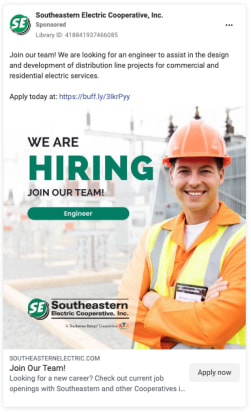
Google Ads
Another effective channel for driving traffic to your flow is Google Ads. Here, the approach would be a bit different, though. Instead of setting up your target audience based on concrete criteria such as demographics, you would rather think about how people are searching for your product or service. Put yourself in the shoes of your prospects and identify the search terms they might use when seeking solutions to their problems. These are the keywords you should bid on and structure your Google Ads campaigns around. (Free tools like the Google Keyword Planner can be quite helpful for this.)
Let’s look at an example. Suppose you are an insurance company aiming to generate leads by offering users a personalized quote, or a free calculator tool to compare rates and calculate potential savings. In this case, the ad copy of your Google Ad could say something like:
“Compare different insurance rates now for free!” or
“Calculate how much you could save by switching insurances”.
Interested prospects will click the ad and land on your flow. The keywords you would be bidding on in this case could be e.g. “insurance comparison”, “free insurance rate calculator”, “free insurance quotes”, or “best health insurance rate”.
By running relevant Google Ads, you reach prospects exactly when they are actively searching for a solution to their problem.
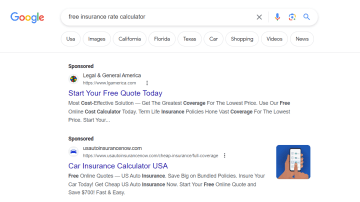
Embed on homepage
Depending on your use case, it could also make sense to embed your heyflow on your homepage. This way, all users visiting your website, both new and existing, will immediately see your flow and can start filling it out without the need to leave your site. The more convenient you make it for your prospects to complete your flow and the less clicks are needed, the higher the chances that they will do so.
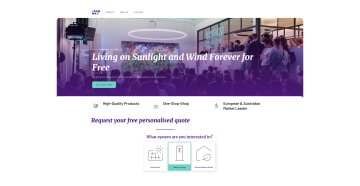
Conclusion
There are many ways to drive traffic to your flow. Ultimately, the choice of which one to pursue will depend on your objective, situation, and budget. To determine which channel is most effective for your purposes and not only brings more visitors to your flow but also generates more leads in the end, it makes sense to try out different methods.


